RFID is the abbreviation of Radio Frequency IdenTIficaTIon. It is translated into radio frequency technology or radio frequency identification technology. It is a non-contact technology that uses electromagnetic waves for automatic identification. It automatically recognizes the target object and acquires relevant data through radio frequency signals. Manual intervention and work in a variety of harsh environments. The characteristics of RFID technology: First, it can identify a single very specific object, instead of only identifying one type of object like a barcode; second, it uses radio frequency, which can read data through external materials, and the barcode must The laser is used to read the information; thirdly, multiple objects can be read at the same time, and the barcodes can only be read one by one. In addition, the amount of information stored is also very large.
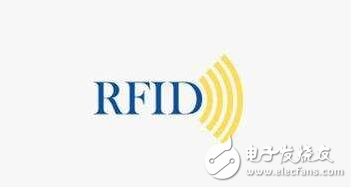
The core technology of RFID is an integrated circuit, each chip contains RFID data, and the reader can read the data stored by the chip at a long distance without scanning or physical contact within the line of sight. With the development of integrated circuit technology and the maturity of chip miniaturization technology and packaging technology, RFID technology has become more and more people's attention and research focus. In recent years, due to the production of RFID chips, the economic scale and cost of RFID chips have been formed. With the reduction and the popularity of RFID technology in the retail industry, RFID technology has developed rapidly.
How RFID works:The RFID system mainly utilizes the transmission characteristics of the spatial coupling (electromagnetic induction or electromagnetic propagation) of the radio frequency signal. In practical applications, the electronic tag needs to be mounted on the identified object, and the signal receiver emits a certain frequency of the radio frequency signal through the antenna. When the tag enters the receiver's acceptance range, it will get energy, send out its own code and other information, and the reader will read it and decode it and send it to the computer for related processing. The schematic diagram is as follows:
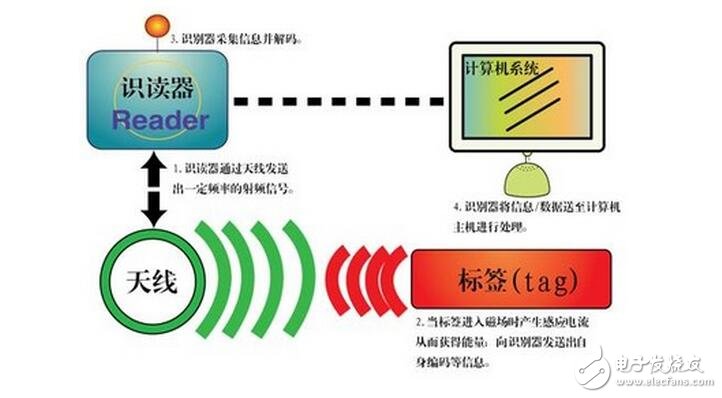
There are three main categories of products derived from RFID technology: passive RFID products, active RFID products, and semi-active RFID products.
Passive RFID products are the earliest development, and are the most mature products in the market. For example, bus cards, canteen meal cards, bank cards, hotel access cards, second-generation ID cards, etc., can be seen everywhere in our daily life, and belong to the close-contact type. The main working frequency of its products are low frequency 125KHZ, high frequency 13.56MHZ, ultra high frequency 433MHZ, ultra high frequency 915MHZ.
Active RFID products have been slowly developed in recent years, and their long-distance automatic identification characteristics determine their huge application space and market potential. In the field of remote automatic identification, such as smart prisons, smart hospitals, smart parking lots, intelligent transportation, smart cities, smart earth and Internet of Things, there are major applications. Active RFID has sprung up in this field and belongs to the category of remote automatic identification. The main working frequency of the product is UHF 433MHZ, microwave 2.45GHZ and 5.8GHZ.
Active RFID products and passive RFID products have different characteristics, which determine different application areas and different application modes, and also have their own advantages. However, in this system, we focus on the semi-active RFID product between active RFID and passive RFID, which combines the advantages of active RFID and passive RFID, and manages the access control in the access control. , regional positioning management, perimeter management, electronic fences and security alarms and other fields have great advantages.
Semi-active RFID products, combined with the advantages of active RFID products and passive RFID products, enable the microwave 2.45G to take advantage of the low frequency 125KHZ frequency. Semi-active RFID technology, also known as low-frequency activation trigger technology, uses low-frequency close-range precise positioning, microwave remote recognition and uploading data to solve the functions that pure active RFID and passive RFID cannot achieve. Simply put, it is to activate positioning at a close distance, to identify and upload data from a distance.
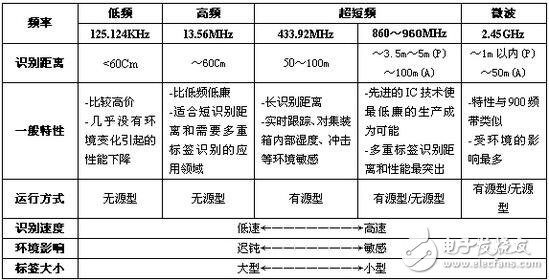
Six categories of RFID tags:
(1) Low/high frequency systems generally have a working frequency of "30 MHz, and typical operating frequencies are 125 kHz, 225 kHz, 13.56 MHz (non-contact IC card - operating frequency of the RF card). Radio frequency identification systems based on these frequency points generally have corresponding international standards. The basic characteristics are: lower cost of electronic tags, less data stored in tags, and shorter reading distance (passive case, typical reading distance is 10cm), rfid electronic label has a variety of shapes (card shape, ring shape, button shape, pen shape), the reading antenna is not strong.
(2) UHF/microwave systems generally have a working frequency of 400 MHz, and typical operating frequency bands are 915 MHz, 2450 MHz, and 5800 MHz. The system is also supported by many international standards in these frequency bands. The basic features are: rfid electronic tags and readers are relatively expensive, the amount of data stored in the tags is large, and the reading distance is far (up to several meters to ten meters). The object has good high-speed motion performance, and the shape is generally card-shaped. The reading antenna and the electronic tag antenna have strong directivity.
(3) The active rfid electronic tag is equipped with a battery, which generally has a far reading distance. The shortcoming is that the battery life is limited (3 to 10 years); there is no battery in the passive electronic tag, after receiving the microwave signal from the reader (pull out device), it converts part of the microwave energy into DC power for work. Generally, it can be maintenance free. Compared to active systems, passive systems have slightly limited reading distances and speed of adaptation to objects.
(4) The information in the integrated solidified electronic tag is generally injected into the ROM process mode when the integrated circuit is produced, and the information stored therein is unchanged; the on-line wired rewrite electronic tag generally writes the information stored in the electronic tag. In the internal E2 storage area, a dedicated programmer or writer is required for rewriting, and it must be powered during the rewriting process; the on-site wireless rewrite electronic tag is generally applicable to active electronic tags, with specific rewriting instructions, within the electronic tag. The saved information is also located in the E2 storage area. In general, the time required to rewrite the electronic tag data is much longer than the time required to read the electronic tag data. Usually, the time required for rewriting is in the order of milliseconds, and the reading time is in milliseconds.
(5) Broadcast transmitting radio frequency identification system. The electronic tag must work in an active manner and broadcast its stored identification information in real time. The reader is equivalent to a receiver that only accepts and transmits. The disadvantage of this kind of system is that the RFID electronic tag emits information continuously, which consumes electricity and causes electromagnetic pollution to the environment, and the security and confidentiality of the system are poor. The frequency doubling RFID system is difficult to implement. Under normal circumstances, the reader sends an RF inquiry signal, and the signal carrier frequency returned by the electronic tag is the frequency multiplication of the RF signal emitted by the reader. This mode of operation facilitates the reader receiving and processing echo signals. However, for passive electronic tags, the rfid electronic tag converts the received reader RF energy into a frequency-doubled echo carrier frequency, and its energy conversion efficiency is low. Higher conversion efficiency is required to increase conversion efficiency, which means higher RFID tag costs. At the same time, the system work must occupy two working frequency points, and it is generally difficult to obtain the product application license of the Radio Frequency Management Committee.
(6) The realization of the reflection modulation type radio frequency identification system is mainly to solve the problem of the same frequency transmission and reception. When the system works, the reader emits a microwave query (energy) signal, and the electronic tag (passive) rectifies part of the received microwave query energy signal into DC power for operation in the rfid electronic tag, and another part of the microwave energy signal is received in the electronic tag. The saved data information is modulated (ASK) and reflected back to the reader. After receiving the reflected amplitude modulated signal, the reader extracts the identification data information saved by the electronic tag. During the operation of the system, the reader emits a microwave signal and receives the reflected amplitude modulated signal simultaneously. The signal strength reflected back is much weaker than that of the transmitted signal, so the technical difficulty in implementation is the same frequency reception.
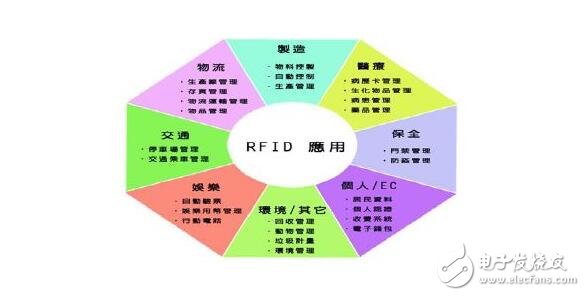
The booming of the Internet of Things has made the wonderful life shown in science fiction films a reality. However, many people say that it takes at least five years for the Internet of Things to really enter life. In fact, as long as we discover with heart, the Internet of Things has entered our life circle. As an important member of the Internet of Things, RFID technology can be seen all over the world.
Practical solutions for RFID:
Design of dual interface passive RFID system for patient monitoring
Patient monitoring equipment is often used to measure signs of life, such as blood pressure, heart rate, etc. The requirements for managing these important data go far beyond simple inventory control and require equipment to provide equipment inspection, calibration and self-test results. Unlike static label stickers, the dynamic dual-interface RFID EEPROM electronic label solution records measurement parameters for later reading and new data entry into the system.
RFID-based application scheme of IoT intelligent public transportation system
The public transportation parking lot station security supervision system based on the Internet of Things technology is mainly composed of two parts: the vehicle entrance and exit management system and the station intelligent video monitoring system. The advanced “object-related technology†is used to extend and extend the user terminal to the bus. Data exchange and communication between any items in the stop-station station, comprehensively solve the problem of supervision of the bus industry.
Community Security System Design Solution Based on RFID Technology
Several readers are installed in the channels of the cell and the channels through which the personnel may pass, and they are exchanged data with the computers of the ground monitoring center through the communication lines. At the same time, an RFID electronic tag identification card is placed on each of the personnel vehicles entering the cell. When the personnel vehicle enters the cell, the reader will sense the signal and upload it to the device as soon as it passes or approaches any reader placed in the channel. On the computer of the monitoring center, the computer can determine the specific information (such as: who, at which location, specific time), the administrator can also click on any location in the cell according to the distribution diagram on the big screen or on the computer, the computer The personnel situation in this area will be counted and displayed. At the same time, once an accident occurs in the community (such as: fire, robbery, etc.), the personnel and vehicles around the accident location can be immediately detected according to the location information of the personnel in the computer, and then the detector can be used to further determine the exact location of the personnel in the accident. In order to help the public security department to rescue the distressed personnel and solve the case in an accurate and rapid manner.
RF access control
The access control system uses radio frequency identification technology to realize that the car with the valid electronic tag does not stop, facilitates the passage and saves time, improves the traffic efficiency of the intersection, and more importantly, can monitor the traffic of the community or the parking lot in real time, and accurately verify The identity of the vehicle and the owner of the vehicle is maintained, and the security of the area is maintained, so that the security management of the community or the parking lot is more humanized, informationized, intelligent and efficient.
Electronic traceability
There are three kinds of traceability technologies: one is RFID radio frequency technology, which attaches a logo with a chip on the product packaging. The products can be automatically collected and read in and out of the warehouse and transported. The flow of products can be recorded on the chip. One is a two-dimensional code. Consumers only need to take a two-dimensional code through a mobile phone with a camera to query the relevant information of the product. The records of the inquiry will remain in the system. Once the product needs to be recalled, the message can be sent directly. To consumers, to achieve accurate recall; there is a bar code plus product batch information (such as production date, production time, batch number, etc.), in this way the production of the company does not increase production costs.
The electronic traceability system enables 100% bi-directional traceability of all batches from raw material to finished product and from finished product to raw material. The biggest feature of this system is the security of the data. Each manual input is backed up by the software in real time.
Food traceability
The use of rfid technology for traceability of food and medicine has been piloted in some cities, including Ningbo, Guangzhou, Shanghai, etc. The traceability of food and medicine mainly solves the problem of tracking food routes. If you find a problematic product, you can simply trace it. Until the root of the problem is found.
Product security
RFID technology has experienced decades of development and application. The technology itself is very mature. It can be seen everywhere in our daily life. The application of anti-counterfeiting is actually adding an RFID electronic tag to ordinary goods. The tag itself is equivalent to the identity card of a product. With the various links of production, distribution and use of goods, all kinds of information on goods are recorded in each link. The tag itself has the following characteristics:
Uniqueness
Each label has unique identification information, and the label is bound to the product information during the production process, and the label uniquely represents the corresponding item in the subsequent circulation and use.
High security
Electronic tags have a reliable security encryption mechanism, which is why today's second-generation ID cards and subsequent bank cards in China use this technology.
Easy to verify
Whether it is pre-sale, in-sale, or after-sale, users can verify it in a very simple way whenever they want to verify. With the popularity of NFC mobile phones, users' own mobile phones will be the simplest and most reliable ones.
Long shelf life
The average label storage time can be several years, ten years, or even decades. Such a storage period is sufficient for most products.
In order to consider the security of information, the application of RFID in anti-counterfeiting generally adopts the 13.56M frequency band label, and the RFID label cooperates with a unified distributed platform, which constitutes a whole process of product anti-counterfeiting system.
Although there are many advantages in RFID anti-counterfeiting, there are obvious disadvantages. The most important one is the cost problem. The cost problem is mainly reflected in the cost of labeling and the construction cost of the whole anti-counterfeiting system. The cost of labeling is generally more than one piece of money. For ordinary cheap goods. It is not realistic to say that it is necessary to use RFID anti-counterfeiting. In addition, the construction cost of the whole anti-counterfeiting system is relatively high. It is not that the average enterprise can afford to realize and promote it. It is more suitable for enterprises with small scale. Third-party RFID anti-counterfeiting platform.
museum
(USA) The California Technology Innovation Museum is using RFID technology to expand and enhance the visitor experience. They give each visitor an RFID tag that allows them to view information about the show on their personal web pages in the future; this tag can also be used to determine the language in the list of directories visited by visitors to the museum. category.
Perhaps one day in the future, the US Museum of Technology Innovation will develop a display to detect the impact of RFID technology on the world. However, the museum in California is using RFID technology to expand and enhance the visitor experience. The museum was founded in 1990. Since its inception, it has become a famous and popular place to visit in Silicon Valley, and has attracted many families and technology enthusiasts to visit. It can receive about 400,000 visitors every year. From the positive and good response made by the visitors, the use of RFID tags was successful.
The museum will be a permanent exhibition of science and technology that contributes to human science, life sciences and communication, and will showcase the achievements of Silicon Valley innovators and others. A life sciences exhibition called "GeneTIcs: Technology With a Twist" was held in March 2004. At this meeting, the museum showed the use of RFID tags, that is, an RFID tag for each visitor. To enable it to view relevant information about the exhibition on its personal webpage in the future.
Due to the influence of other visitors and the time limit, visitors are not able to understand and learn more about the display as expected. By using RFID tags to automatically create personalized information pages, visitors can choose to search for relevant information on a display topic at a convenient time, or find relevant documents in the museum.
After the visit, visitors can also access the website via the Internet at the school or at home and type in a 16-digit ID number on their label and log in. This way they can access their unique personal web page. Many museums in the United States and other countries plan to use RFID technology on the same end of a card or badge. At least one natural history museum in Denmark handed the reader to the visitors in the form of a PDA and combined the label with the display. But according to Greg Brown, deputy director of the Museum of Technology Innovation, the museum is the first museum to use RFID technology wristbands.
World Expo
The number of exhibitions held in Shanghai is increasing at a rate of 20% per year. The Shanghai Municipal Government has been actively exploring how to apply new technologies to enhance the ability of the group to better display the image of Shanghai. The application of RFID in large-scale exhibitions has been verified. In 2005, the ticket system of the Aichi Expo adopted RFID technology, which enabled a large number of visitors to enter the market quickly. The organizers of the 2006 World Cup also adopted tickets embedded in RFID chips, which played a role in anti-counterfeiting. This has attracted the attention of the organizers of large-scale exhibitions. At the 2008 Beijing Olympics, RFID technology has been widely used.
The 2010 World Expo will be held in Shanghai. There are a large number of information service needs for sponsors, exhibitors, visitors, volunteers, etc., including crowd flow, traffic management, information inquiry, etc. RFID systems are effective in meeting these needs. One of the means. The organizers of the Expo are concerned about the anti-counterfeiting of tickets. Participants are more concerned about which visitors have visited their booths, what they are about the content and products, and the personal information of the visitors. Visitors want to quickly get the information they want and find the content they care about.
Application example:
Wal-Mart uses RFID tags to manage clothes
Starting in August, Wal-Mart will begin an electronic ID labeling program to track jeans and underwear. The mobile RFID smart tag on the garment will enable employees to quickly get inventory counts – knowing how many pieces of clothing, which size of clothing is out of stock, and knowing which sizes are in stock.

Wal-Mart requires suppliers to attach these electronic tags to removable paper labels or packaging, rather than being embedded in clothing, to minimize the fear of tags tracking people's whereabouts and to prevent privacy leaks. There are also signs that prompt customers about the label.
RFID intelligent electronic license plate
Intelligent electronic license plate is a new type of electronic license plate formed by combining ordinary license plate and RFID technology. An intelligent electronic license plate consists of an ordinary license plate and an electronic license plate. An electronic license plate is actually a wirelessly recognized electronic tag. Encrypted vehicle data is stored in the electronic license plate. Its data can only be read by an authorized wireless recognizer. At the same time, a monitoring base station is set up on each traffic trunk (the monitoring base station is composed of a camera, a radio frequency card reader and a data processing system), and the monitoring base station is connected to the central server through GPRS, and is connected to the police PDA through the WLAN. The law enforcement personnel carry the PDA, stand in front of the monitoring base station, and the vehicle passes through the monitoring base station. The camera will capture the physical license plate of the vehicle. After the monitoring of the base station image recognition system, the license plate number of the physical license plate is obtained; at the same time, the radio frequency card reader reads The vehicle information encrypted in the electronic license plate is obtained by the monitoring base station, and the license plate number of the electronic license plate is obtained.

Since the electronic license plate after hardware design, software design and data encryption cannot be copied, and each vehicle is only equipped with one. If it is a fake deck vehicle, the license plate number of the physical license plate must have no corresponding electronic. The license plate number of the license plate, the monitoring base station immediately sends the license plate of the physical license plate to the PDA of the traffic police ahead through the WLAN, prompting the traffic police to intercept. A similar principle, the smart license plate system can also complete the identification of blacklisted vehicles and illegally operated vehicles.
ETC road and bridge non-stop charging system based on RFID
Intelligent Transportation System (ITS) is a frontier research topic in the world of transportation and is also the focus of China's transportation technology development.
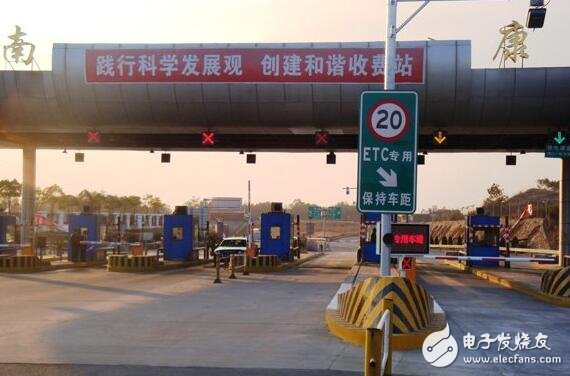
The RF Automatic Identification Non-Parking Toll System (ETC) is currently the most advanced road and bridge charging method in the world. Through the special short-range communication between the electronic tag installed on the windshield of the vehicle and the microwave antenna on the ETC lane of the toll station, the computer network technology is used to perform background settlement processing with the bank, so that the vehicle does not need to stop through the road and bridge toll station. The purpose of paying the fee.
China Mobile promotes RFID-SIM mobile wallet
For China Mobile's users, as long as the SIM card is replaced by the 2.4Ghz mobile wallet card supporting RFID function in major China Mobile business halls, you can use mobile phones in merchants with China Mobile's dedicated POS machines, such as convenience stores, shopping malls, supermarkets, The bus carries out on-site credit card consumption.

It is particularly worth mentioning that the maximum consumption of “mobile payment†is 150 yuan, which further limits the business function of mobile payment; while the maximum consumption of “mobile wallet†reaches 1,000 yuan, which is also enhanced in a certain sense. The concept of a "wallet" for mobile phones.
New York uses RFID technology to achieve train tracking
Recently, the Buffalo Metro Track Reconstruction Project in New York selected RFID technology solutions from TagMaster AB of Sweden to implement train tracking.
The company's solution utilizes 2.45GHz RFID technology and includes heavy-duty readers installed in trains to provide location information for train passenger information systems and obstacle systems between trains. It is activated. The obstacle system between the trains is to prevent accidental entry into the area between trains when the train is stopped to reduce the risk of damage.
RFID access control system application penetration rate of 90%
RFID technology started early and can be seen in various industries. For the security industry, RFID technology is mature and stable, and it is very simple to use as an access control system. The card is accompanied by information for identity management.
According to the working frequency, RFID technology can be divided into low frequency (LF), high frequency (HF), ultra high frequency (UHF) and microwave frequency (MW). At present, low-frequency and high-frequency technology applications account for more than 70% of the RFID market. The main applications in various fields are low-frequency and high-frequency technologies, such as access control cards, second-generation licenses, and transportation cards, and their applications are relatively mature.
On the contrary, ultra-high frequency and microwave are limited to the cost and technical level, and the application range is relatively narrow. However, under the promotion of national policies, UHF and microwave began to develop at a high speed. Because these two frequency bands can realize long-distance identification, the number of identification is relatively large, and it will become the mainstream trend in the future. The application fields of UHF technology mainly include logistics, asset management, food and drug traceability, highway toll collection, hospital patient and doctor management (more foreign countries, some domestic projects are implemented), coal mine personnel positioning system and so on.
RFID technology enters the parking lot system
The remote sensing parking lot management system based on RFID technology is one of the most advanced automatic parking management methods in the world. It is the development trend of parking lot management. Its security, stability and automation are manual management or close identification. The system could not be reached. Its non-imitation, anti-interference, anti-impact, fast identification, intelligent identification will undoubtedly provide a new solution for all kinds of yard management. The system can realize the functions of automatic non-stop, automatic identification, automatic registration, automatic release, etc. The background management software can implement multiple functions such as viewing vehicle information, entry and exit time inquiry, report, payment record inquiry, information reminding and the like.
Shanghai World Expo uses RFID tickets
After three months of baptism, the Shanghai World Expo still maintains about 500,000 visitors per day. It is able to maintain so many people to enter the venue in an orderly and fast manner. In addition to the local staff and volunteers working hard, advanced RFID technology is also indispensable.

The Shanghai World Expo will use advanced RFID tickets. The RFID-SIM chip is integrated into the ticket. The user interface, wireless communication technology and contactless communication technology of the mobile terminal are used to realize the purchase and voting of the ticket. The embedded electronic tag can read a unique set of serial numbers on the relevant instrument, ensuring that each legitimate source of Expo tickets is unique.
Malaysian oil drilling platform uses RFID to detect accidents
Recently, an oil drilling platform in Malaysia used Axcess InternaTIonal's RFID technology solution to install an RFID "Man-Down" monitoring and positioning system to protect the personal safety of workers.
Axcess International provides oil companies and other customers with wireless certification solutions, employee badges, and software and hardware for compiling badge data, allowing management to better track workers' positions. In the event of a training or emergency, the user can install a door reader in a location such as a gathering area or use a handheld reader. In this way, the company can track the time and place of work of the workers and report to the gathering area. In 2009, Axcess, a customer with an oil exploration site in Malaysia, asked for a more effective program to track workers who were engaged in high-risk jobs, and the company received an automatic alert if it detected that the worker might be injured.
The solution, Axcess International, is called the Man-Down Monitoring and Positioning System, which combines a motion sensor with an active RFID tag to create a “MicroWireless Credentialâ€. Don't store an ID code on the clothing security badge, corresponding to the employee's name, job type, and other relevant information in Axcess International's back-end software system. The tag uses a proprietary air interface protocol to transmit information at 315 MHz or 433 MHz. To conserve battery power, Griebenow says the badge stays asleep until it is activated by the activator's 132 kHz signal.
RFID technology ensures food safety
"The people take food as the sky and food as the first", and the food safety issue can be said to be "the bottom line of the people's livelihood." Worldwide, food safety crises, such as food poisoning, mad cow disease, foot-and-mouth disease, avian flu and other livestock diseases, as well as the proliferation of severe agricultural residues and imported food materials, have frequently affected people's health and have caused widespread worldwide Concerned, how to effectively track and trace food has become an extremely urgent global issue. In order to ensure the safety of mass food, some developed countries have integrated food traceability technology into relevant laws and applied RFID technology to food traceability.
For example, at this World Expo, the organizer adopted the advanced “Expo Food Logistics RFID Monitoring Traceability System†to include temperature control for vegetables, aquatic products, livestock, milk, eggs, bread and pastries, and semi-finished products for food and beverage provided by Bobo. There are required foods, and the corresponding radio frequency identification equipment is also equipped on the logistics box type car for Expo food. The vehicle with chilled frozen food is equipped with temperature continuous monitoring equipment such as radio frequency identification. When food enters the park, law enforcement officers can quickly trace the source of food and raw materials on the spot through hand-held office terminal mobile devices to ensure the safety and reliability of the supply channels. At the same time, it will also choose to wear radio frequency identification tags on packaging bags such as vegetables, fruits, aquatic products, eggs and other primary food products and distribution of catering semi-finished products, storage of breeding enterprises or production units, product names, production areas, production dates, shelf life, storage conditions. Information such as product packaging and RFID tags are fully integrated into the catering, retail or logistics terminals as the goods are traded to ensure traceability of food and materials.
ZGAR Aurora 1200 Puffs
ZGAR electronic cigarette uses high-tech R&D, food grade disposable pod device and high-quality raw material. All package designs are Original IP. Our designer team is from Hong Kong. We have very high requirements for product quality, flavors taste and packaging design. The E-liquid is imported, materials are food grade, and assembly plant is medical-grade dust-free workshops.
Our products include disposable e-cigarettes, rechargeable e-cigarettes, rechargreable disposable vape pen, and various of flavors of cigarette cartridges. From 600puffs to 5000puffs, ZGAR bar Disposable offer high-tech R&D, E-cigarette improves battery capacity, We offer various of flavors and support customization. And printing designs can be customized. We have our own professional team and competitive quotations for any OEM or ODM works.
We supply OEM rechargeable disposable vape pen,OEM disposable electronic cigarette,ODM disposable vape pen,ODM disposable electronic cigarette,OEM/ODM vape pen e-cigarette,OEM/ODM atomizer device.

Aurora 1200 Puffs,ZGAR Aurora 1200 Puffs Pod System Vape,ZGAR Aurora 1200 Puffs Pos Systems Touch Screen,ZGAR Aurora 1200 Puffs Disposable Vape Pod System,1200Puffs Pod Vape System
ZGAR INTERNATIONAL(HK)CO., LIMITED , https://www.zgarette.com
